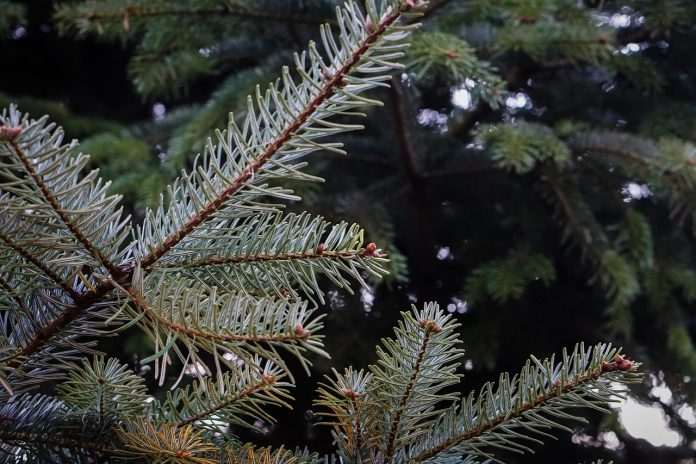We have just gone through the heartwarming time of year when we celebrate the wonder and the magic of Christmas. And what a glorious time of year that it is and how we have needed it, considering 2020. But, my goodness, this time of year can create a lot of needless waste.
As conservationists, we can help alleviate a lot of that waste and reduce our carbon footprint, starting with our live Christmas trees. Once these beautifully decorated trees have served their purpose of making our homes bright and cheerful, we can give it new life and purpose by utilizing it in other ways.
Reuse
First, if you have not used old-world edible decorations like popcorn and cranberries, please make sure that you have removed all of other nonedible decorations before you place your trees outside.
If you purchase a tree with the root ball intact, your tree can be planted outside. As soon as possible after Christmas, plant your tree outside.
Conifers make excellent windbreaks, and who doesn’t like a good windbreak? Wildlife such as deer and rabbits use them as windbreaks and bedding. In large quantities, conifers can be used as windbreaks for livestock.
If you have used decorations that are edible by wildlife you can set the tree outside. Christmas trees can make wonderful bird feeders. You can add dried fruit, suet, stale bread and bags of seed. The tree will not only be a source of food for sparrows, chickadees, cardinals and bluejays but it will also provide them shelter from the cold winter.
If you have a lake or pond on your property, place your tree in there. Christmas trees provide habitats and forage for fish and over the course of time will decompose.
Recycle
If you don’t have a lake or pond on your property, check with your city or township department to see if they offer a drop off location.
Here in Mahoning County, our Solid Waste Management Green Team allows residents to drop off their trees; then the Ohio Department of Natural Resources Division of Wildlife places the trees in our nearby lakes. Municipalities may also offer to take your Christmas trees as they use them for mulch within community parks and gardens.
You can chip the trees yourself and use the mulch in your gardens or as ground cover around landscaping. Just the needles alone make great mulch. Pine tree needles decompose slowly and do not collect mold.
And speaking of pine needles, they also make great potpourris and sachets. Store needles in a brown paper bag in a cool, dry area and they will retain their scent for some time. Who doesn’t love the smells of Christmas time all year round?
Another option for recycling and reusing is to chop your tree and use it as firewood for your fireplace and/or fire pit. But be careful using the branches as they can send off sparks. If burning in your house fireplace, you should just use the Christmas tree firewood to start the fire as the burning pine wood may leave a tarry residue on your fireplace. Also, you may have to wait a while for the wood to dry, but the scent of a good log fire makes it worth the wait. Saving the wood until the summer night time fires is worth the wait as well.
Reimagine
There are many woodworking projects that you can do with what was once a beautiful Christmas tree. Give the gift of coasters or trivets next Christmas made from the tree of this year. Plaques with family names and addresses can be created. If you didn’t use the whole tree as a birdhouse, maybe create one made from the twigs and branches of the tree.
Not feeling very crafty but still want to use the chop wood for a project? You can use the logs for garden barriers or paths. Shredding the tree makes a natural path material that is not only aesthetically pleasing but very comfortable to walk on as a hike and good for the environment.
Christmas trees are extremely effective soil erosion barriers. Christmas trees can be used along our lakes and rivers to secure shoreline stabilization and sediment management concerns
If your Christmas tree is still in your backyard come spring, don’t worry. If permitted in your community, you can burn your Christmas tree. The ashes are nutrient and mineral rich and can be spread in your garden thereby saving money on other costly soil amendments.













